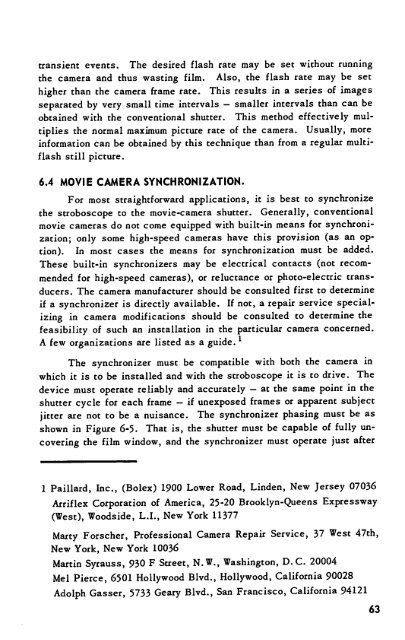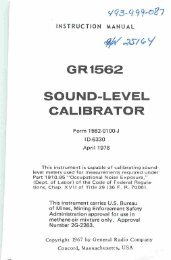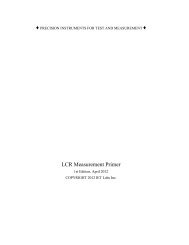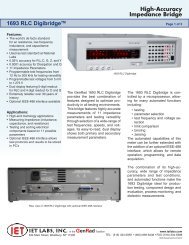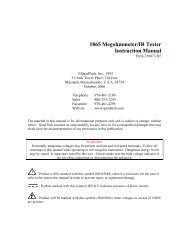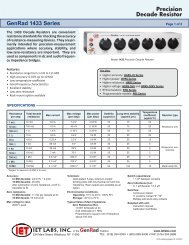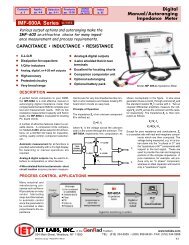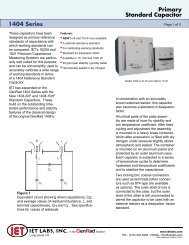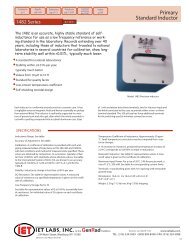Handbook of High Speed Photography - IET Labs, Inc.
Handbook of High Speed Photography - IET Labs, Inc.
Handbook of High Speed Photography - IET Labs, Inc.
You also want an ePaper? Increase the reach of your titles
YUMPU automatically turns print PDFs into web optimized ePapers that Google loves.
transient events. The desired flash rate may be set without running<br />
the camera and thus wasting film. Also, the flash rate may be set<br />
higher than the camera frame rate. This results in a series <strong>of</strong> images<br />
separated by very small time intervals —smaller intervals than can be<br />
obtained with the conventional shutter. This method effectively mul<br />
tiplies the normal maximum picture rate <strong>of</strong> the camera. Usually, more<br />
information can be obtained by this technique than from a regular multiflash<br />
still picture.<br />
6.4 MOVIE CAMERA SYNCHRONIZATION.<br />
For most straightforward applications, it is best to synchronize<br />
the stroboscope to the movie-camera shutter. Generally, conventional<br />
movie cameras do not come equipped with built-in means for synchroni<br />
zation; only some high-speed cameras have this provision (as an op<br />
tion). In most cases the means for synchronization must be added.<br />
These built-in synchronizers may be electrical contacts (not recom<br />
mended for high-speed cameras), or reluctance or photo-electric trans<br />
ducers. The camera manufacturer should be consulted first to determine<br />
if a synchronizer is directly available. If not, a repair service special<br />
izing in camera modifications should be consulted to determine the<br />
feasibility <strong>of</strong> such an installation in the particular camera concerned.<br />
A few organizations are listed as a guide.<br />
The synchronizer must be compatible with both the camera in<br />
which it is to be installed and with the stroboscope it is to drive. The<br />
device must operate reliably and accurately —at the same point in the<br />
shutter cycle for each frame —if unexposed frames or apparent subject<br />
jitter are not to be a nuisance. The synchronizer phasing must be as<br />
shown in Figure 6-5. That is, the shutter must be capable <strong>of</strong> fully un<br />
covering the film window, and the synchronizer must operate just after<br />
1 Paillard, <strong>Inc</strong>., (Bolex) 1900 Lower Road, Linden, New Jersey 07036<br />
Arriflex Corporation <strong>of</strong> America, 25-20 Brooklyn-Queens Expressway<br />
(West), Woodside, L.I., New York 11377<br />
Marty Forscher, Pr<strong>of</strong>essional Camera Repair Service, 37 West 47th,<br />
New York, New York 10036<br />
Martin Syrauss, 930 F Street, N.W., Washington, D.C. 20004<br />
Mel Pierce, 6501 Hollywood Blvd., Hollywood, California 90028<br />
Adolph Gasser, 5733 Geary Blvd., San Francisco, California 94121<br />
63


